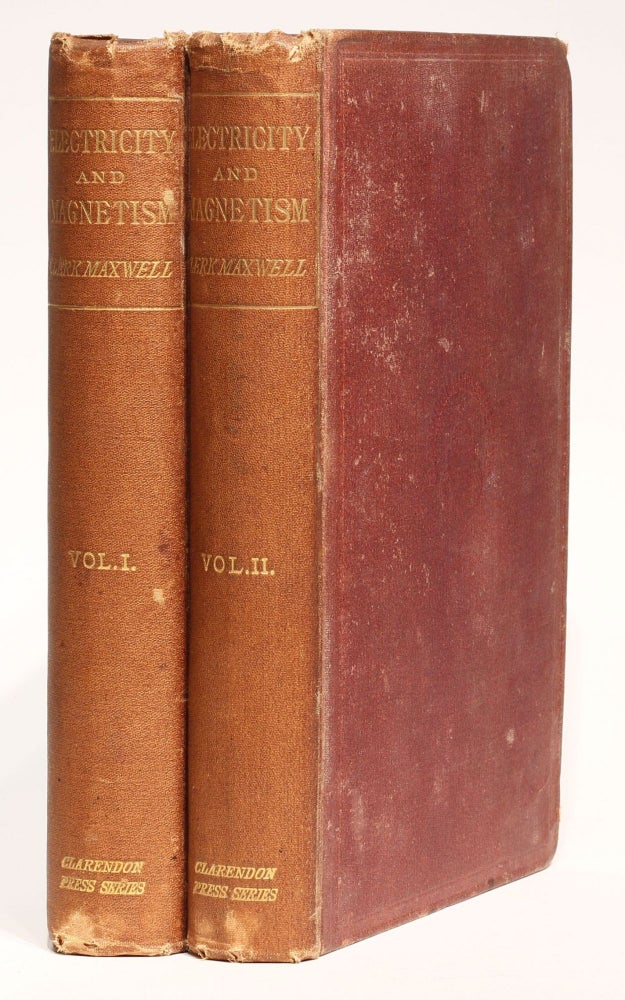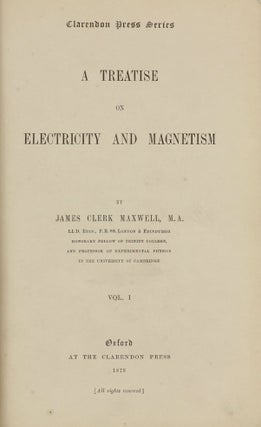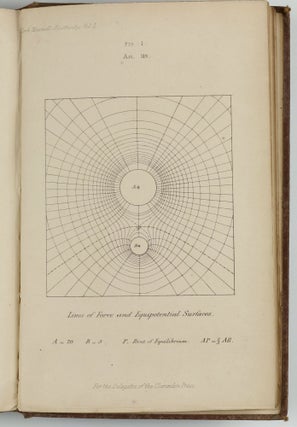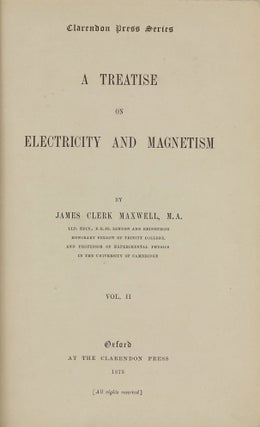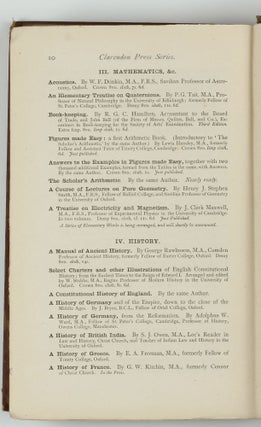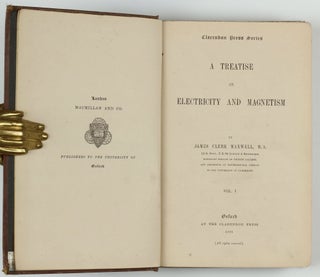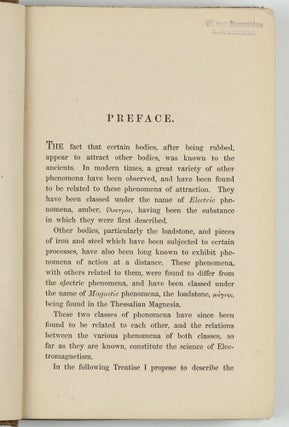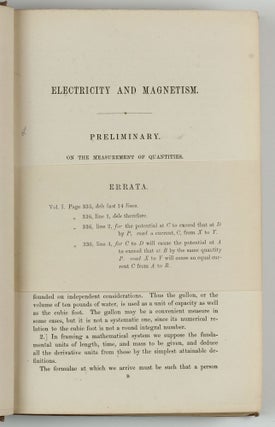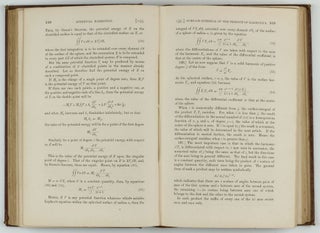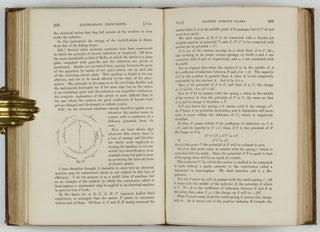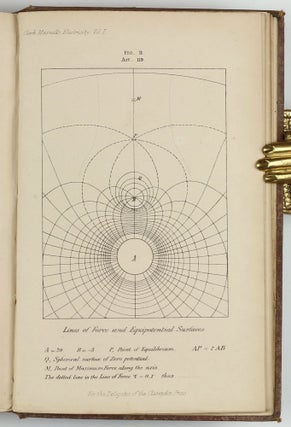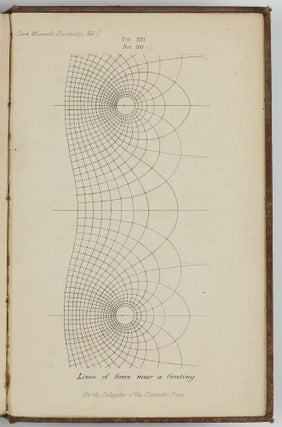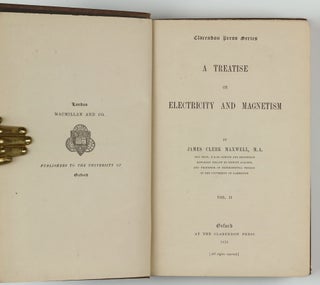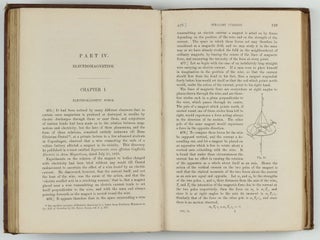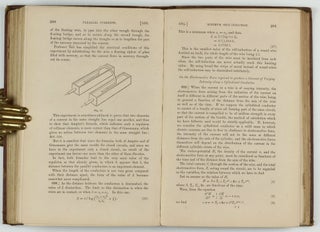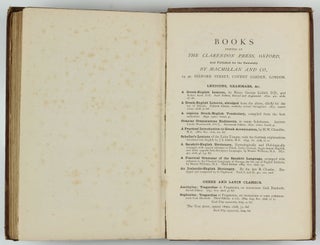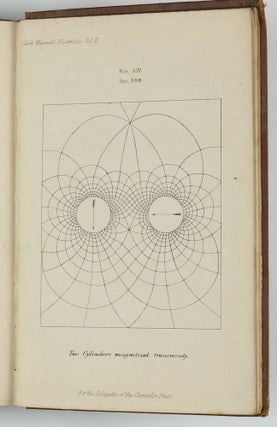The first issue of the first edition in publisher's bindings
A treatise on electricity and magnetism.
Oxford: The Clarendon Press, 1873.
1st Edition. Hardcover. Very Good. Item #002715
Two volumes. 8vo (223 x 142 mm). xxix [5], [1] 2-425 [3]; xxiii [1], [1] 2-444, [2], 15 [1] pp. Including 21 lithographic plates (1 bound after p.148 of vol. I, the rest at end of volumes), half-titles, errata slip to vol. I, numerous diagrams and illustrations in text, 15 pp. of publisher's advertisements at rear of vol. II. Original publisher's blind-stamped plum cloth, spines lettered in gilt, glazed endpapers (spine ends little frayed, boards rubbed and spotted, corners bumped and worn, spines slightly faded, end-papers partly cracked at inner hinges, binding a bit weak but holding firm). Pages untrimmed and partly unopened. Text only little age-toned, otherwise crisp and clean. Provenance: W. van Bemmelen, Leiden (small ink stamps to top of half-titles and page [v] of vol. II), bookseller's ticket on front pastedowns. A fine copy internally in untouched original binding. ----
Horblit 72; Norman 1466; PMM 355 (note); DSB IX, p.198ff; Wheeler-Gift 1872. - FIRST EDITION, FIRST ISSUE OF A MAJOR SCIENTIFIC WORK with 'just published' in the listing for this title on page 10 of the publisher's advertisements at the rear of volume two. Maxwell saw electricity not as just another branch of physics but 'as an aid to the interpretation of nature' and saw the study of electromagnetism 'as a means of promoting the progress of science' (Preface p.vii). He demonstrated the importance of electricity to physics as a whole, advancing "the significant hypothesis that light and electricity are the same in their ultimate nature" (Grolier/Horblit). This theory, one of the most important discoveries of nineteenth-century physics, was Maxwell's greatest achievement, and laid the groundwork for Einstein's theory of relativity. "Maxwell once remarked that the aim of his Treatise was not to expound the final view of his electromagnetic theory, which he had developed in a series of five major papers between 1855 and 1868; rather, it was to educate himself by presenting a view of the stage he had reached in his thinking. Accordingly, the work is loosely organized on historical and experimental, rather than systematically deductive, lines. It extended Maxwell's ideas beyond the scope of his earlier work in many directions, producing a highly fecund (if somewhat confusing) demonstration of the special importance of electricity to physics as a whole. He began the investigation of moving frames of reference, which in Einstein's hands were to revolutionize physics; gave proofs of the existence of electromagnetic waves that paved the way for Hertz's discovery of radio waves; worked out connections between the electrical and optical qualities of bodies that would lead to modern solid-state physics; and applied Tait's quaternion formulae to the field equations, out of which Heaviside and Gibbs would develop vector analysis." (Norman 1466).
Sold
Delivery time up to 10 days. For calculation of the latest delivery date, follow the link: Delivery times
Lieferzeit max. 10 Tage. Zur Berechnung des spätesten Liefertermins siehe hier: Lieferzeiten


